When it comes to French Bulldog colors, numbers are like shades in a rainbow.
What are the healthiest colors, or is there a certain color best to avoid?
What colors are accepted as standard, and what French Bulldog coloring is considered rare or unique?
Believe it or not, the wrong color combination (such as the case of two Merle parents) means a combination of two undesirable genes and can be disastrous for your litter.
According to the American Kennel Club, accepted colors are:
“Acceptable colors: white, cream, fawn (ranging from light fawn to a red fawn), or any combinations of the foregoing.”
AKC French Bulldog Breed Standard Color Excerpt
First and foremost, you should seek out a reputable breeder and color definitely shouldn’t be your main concern.
Many of these designer colors are created due to poor breeding programs and should be avoided, the fact that some colors are rare doesn’t mean they’re desirable.
Health testing is and will always be key.
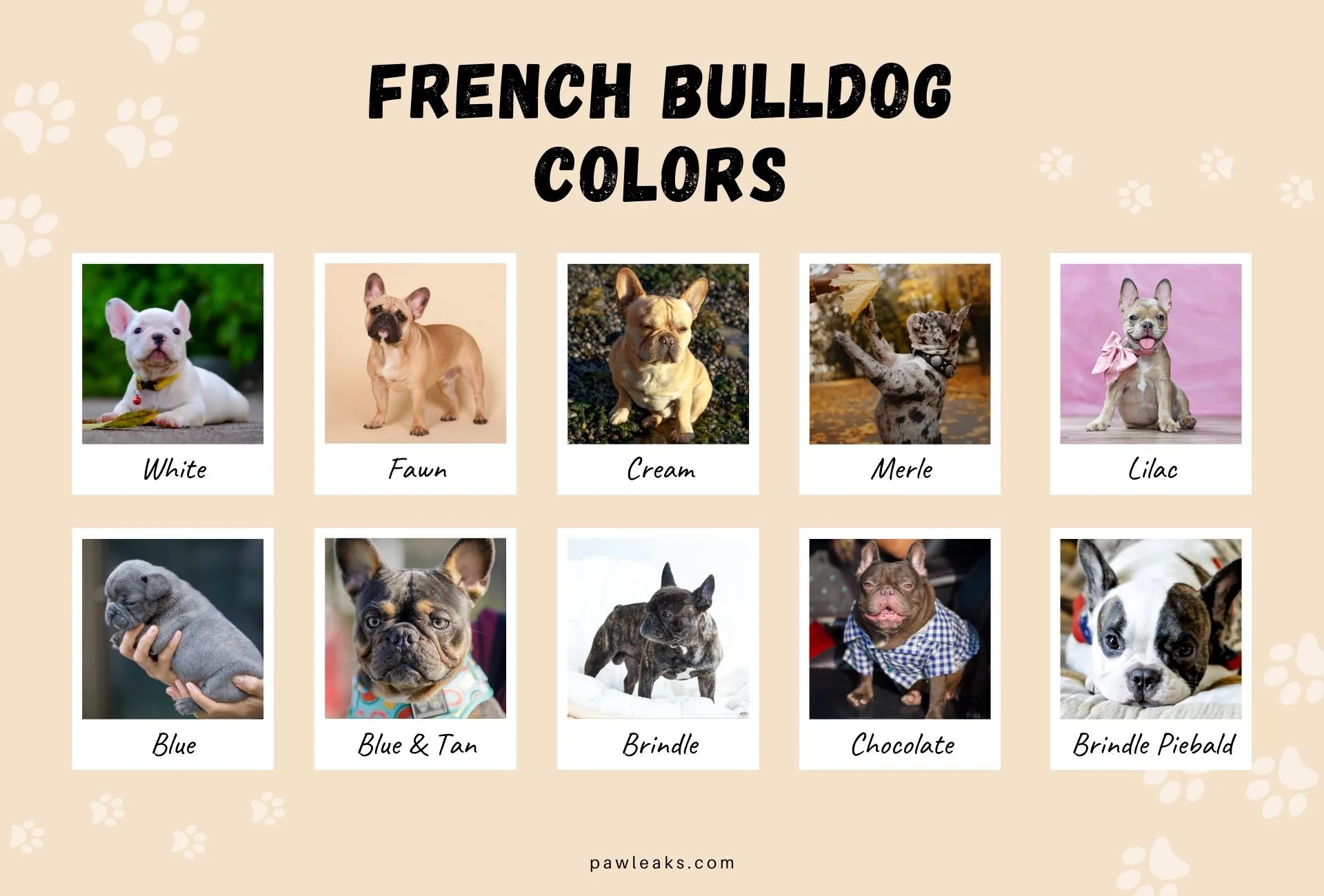
White French Bulldog
As the name implies, these dogs sport pale white coat coloring.
The purely white French Bulldog coloring isn’t as common with so many others these days but is still labeled by many as a beautiful color.
Various genetic factors, such as brindle, leucism, albinism, and merle genes can all lead to this pale coat coloring.
However, this Frenchie color can be just as dangerous as it might be attractive.
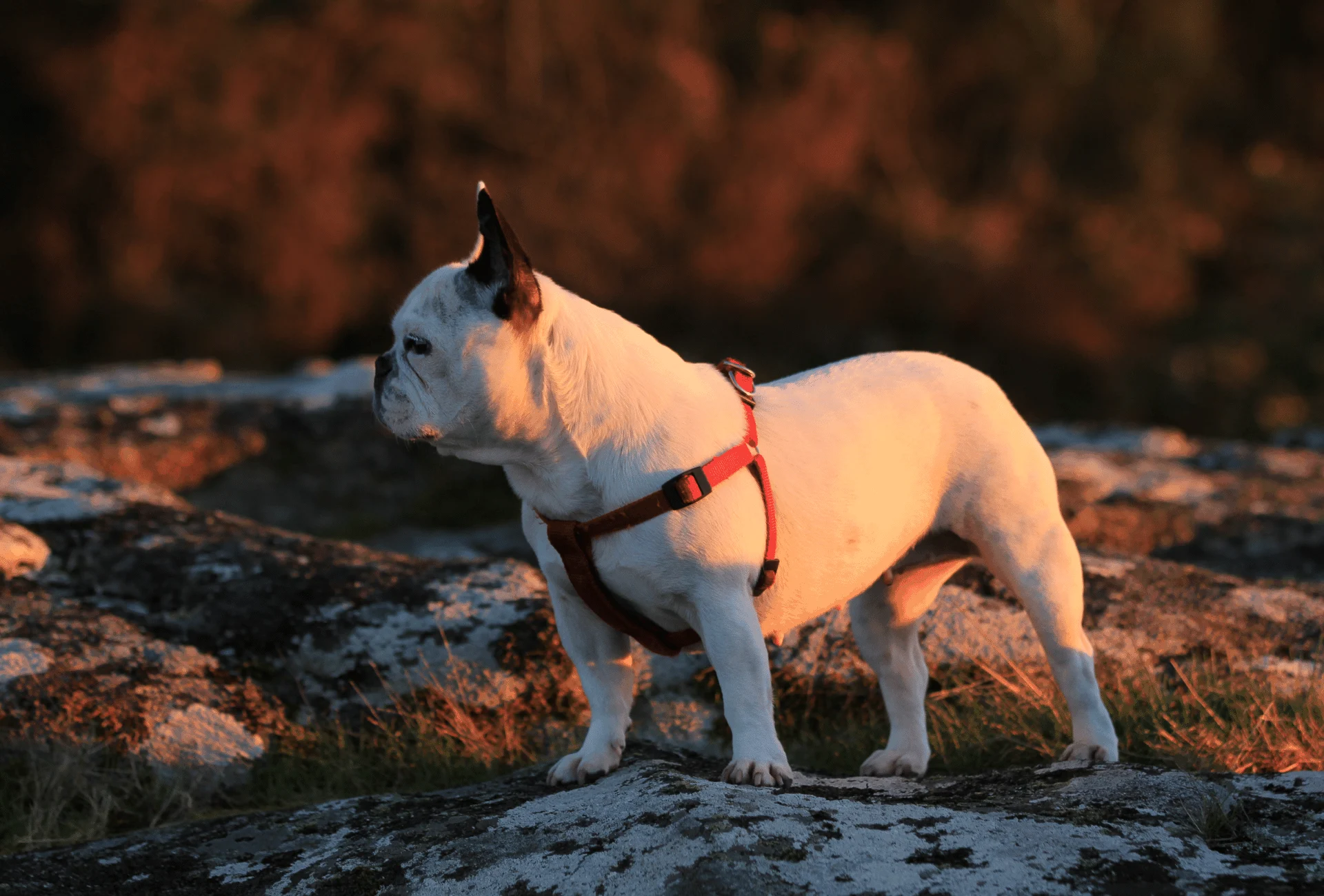
Your White French Bulldog might face future skin problems, eye and ear issues, and many others.
Albino French Bulldog coloring is as rare for them as it is for most other animal species (humans included).
Albinism is caused by a recessive trait, meaning both parents would need to pass it along to offspring, and statistically said offspring might still only have a 1 in 4 chance of being born albino.
Cream French Bulldog
Another favorite among the French Bulldog colors, cream presents as a sort of slightly duller shade of white.
Cream-colored Frenchies owe thanks to a recessive trait inherited from the fawn coat color line.
No distinct markings will mar a solid-colored coat, offering a very clean, pure appearance.
Lighter cream edges on the ears are especially distinguished.
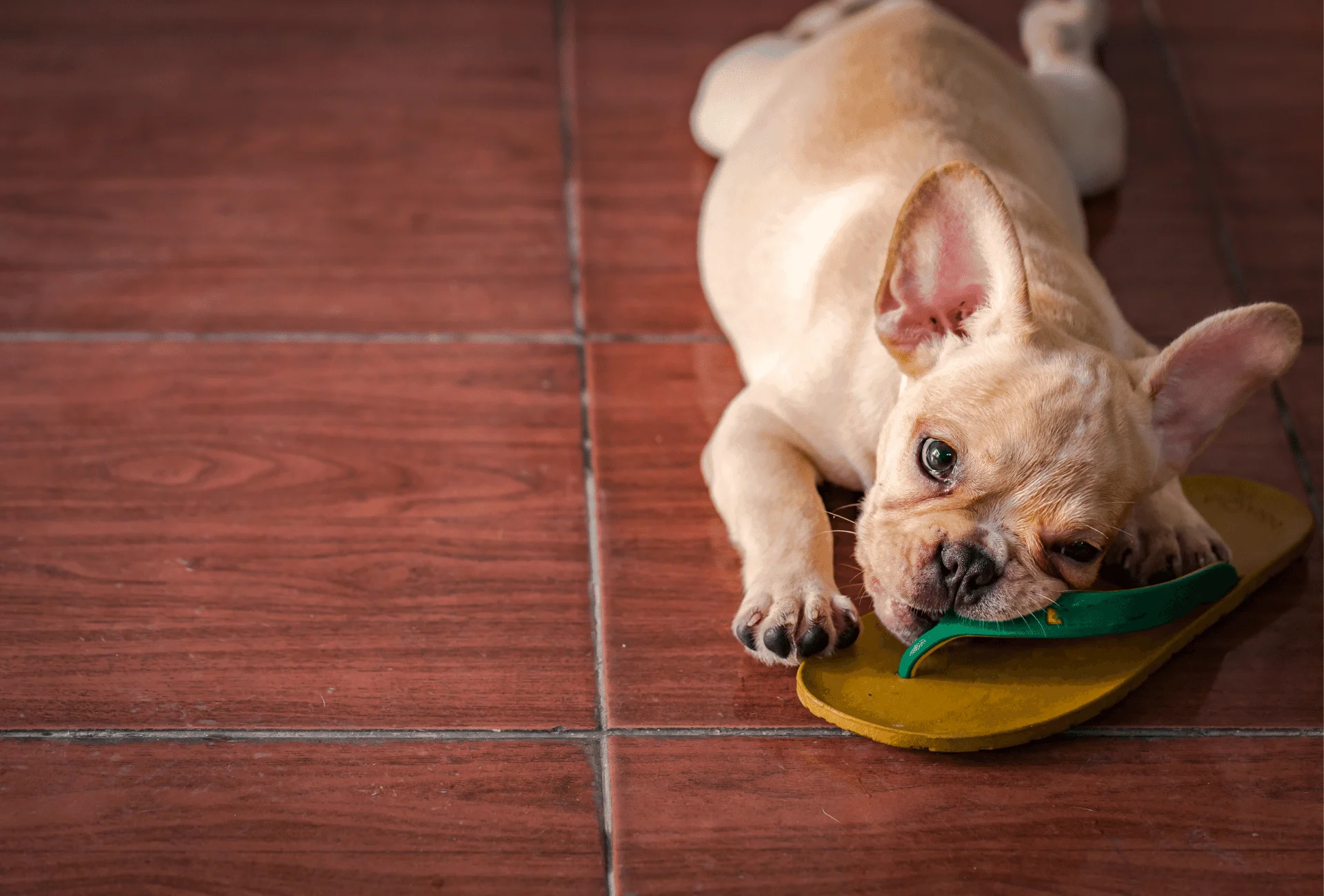
In the end, true cream isn’t the most common Frenchie coat color.
A darker dusk color rims the eyes and no pinker ticking or pigment in the eye rims like white Frenchies.
Fawn French Bulldog
The AKC perhaps favors the Fawn French Bulldog color above others (often minus bland chocolate fawn).
Colors like beige or tan-brown fall under acceptable limits, but can range from a golden tan to more reddish tan, or creamer to lighter tan.
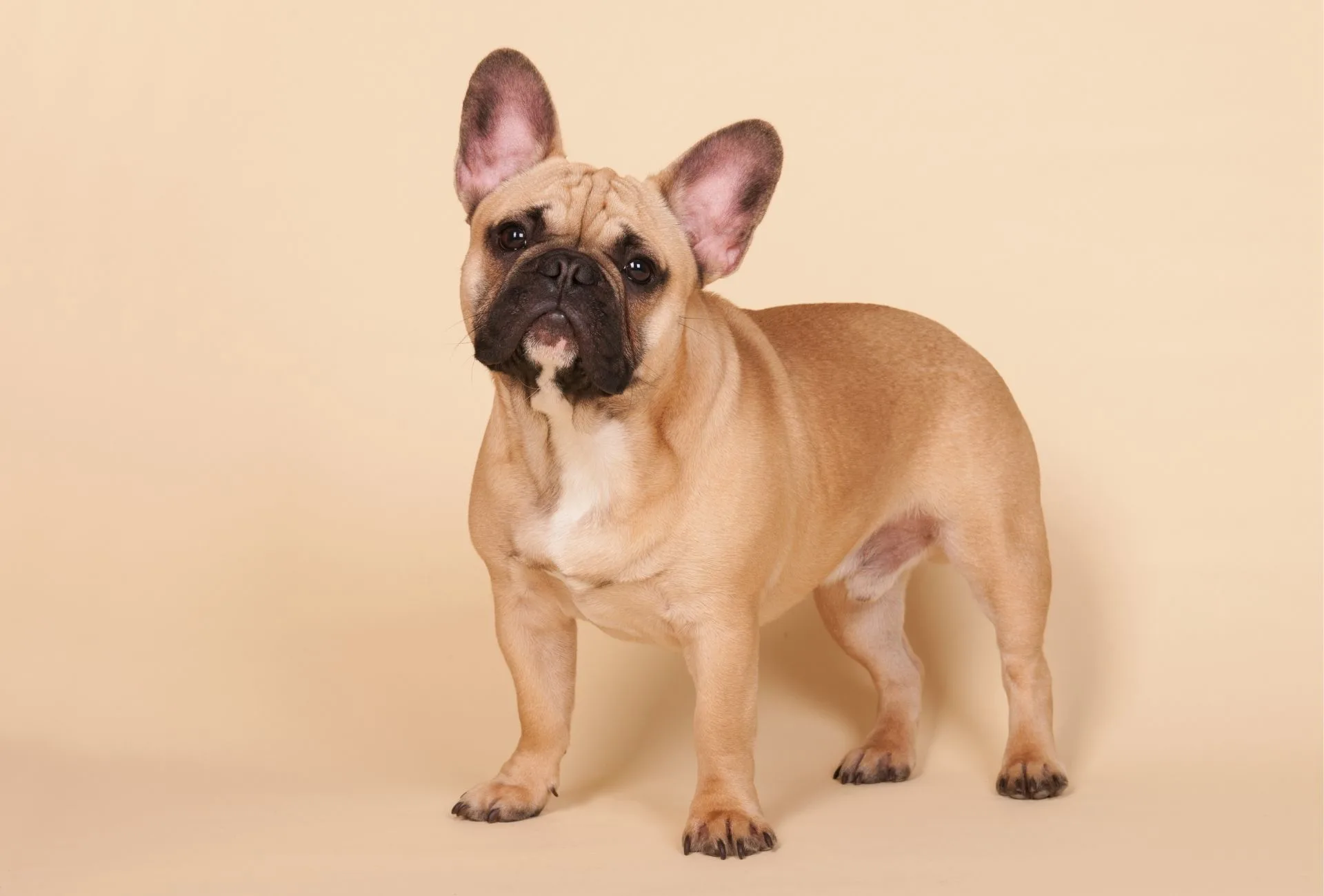
Coat is brilliant, short and smooth. Skin is soft and loose, especially at the head and shoulders, forming wrinkles. Coats other than short and smooth are a disqualification.
AKC French Bulldog Breed Standard Color Excerpt
Patterns:
- Brindle: ‘Tiger stripe’ pattern
- Piebald: Mostly white coat with darker markings
- Black masks: Area surrounding the mouth and nose
- Black shadings
- White markings
“Markings and patterns are: brindle, piebald, black masks, black shadings, and white markings. Ticking is acceptable but not desired.”
AKC French Bulldog Breed Standard Color Excerpt
As with lots of other breeds, the craze about all the various colors that follow now can create a false sense of them being desirable.
Keep in mind that many of these colors will make you ineligible for conformation in many clubs and can come with health risks.
Merle French Bulldog
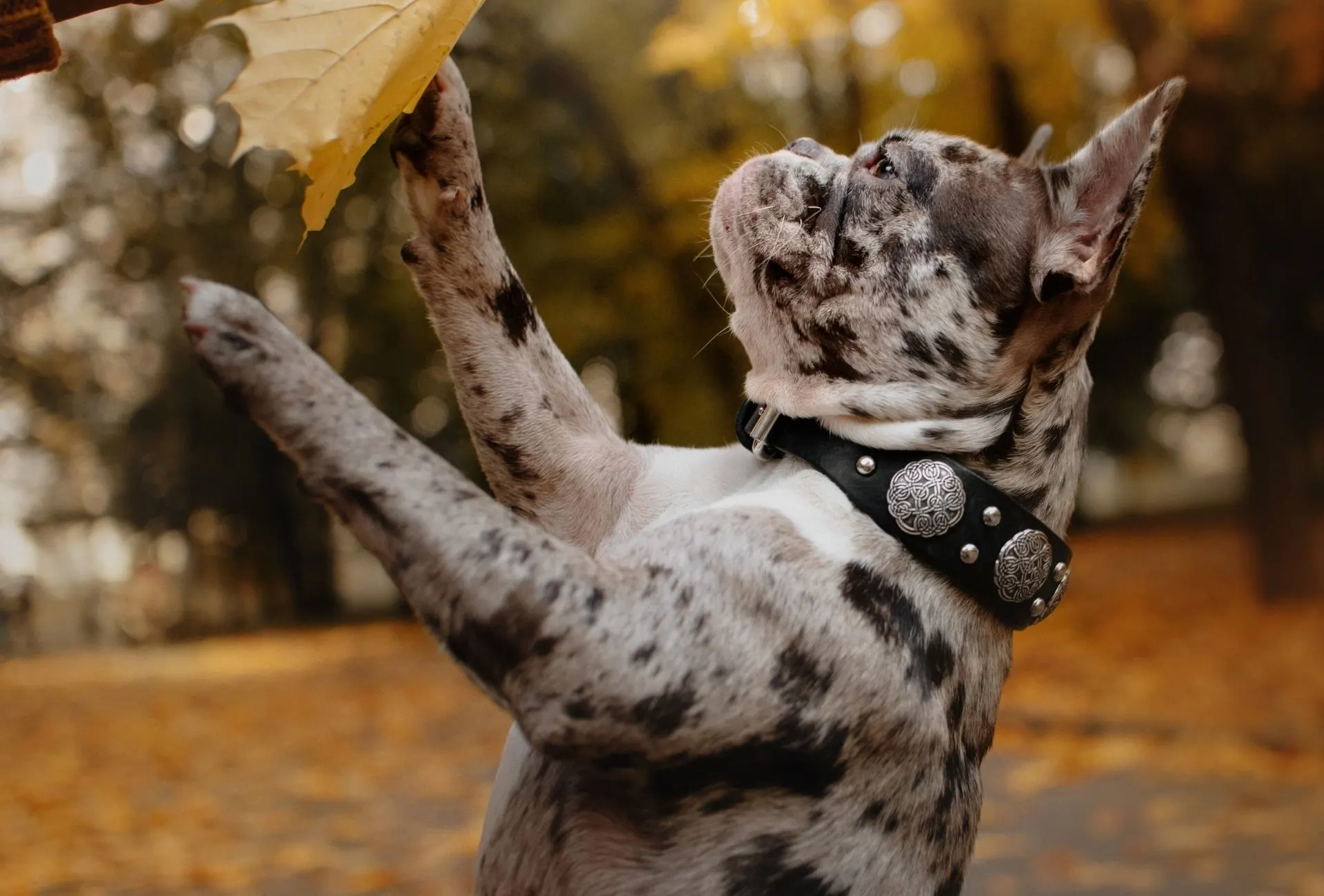
Being a dominant gene in dogs, Merle creates a beautiful and exotic sort of pale fur pattern with several patches.
Though it’s a beautiful breed with a unique color pattern, Merle French Bulldogs are considered a rare combination and can be prone to develop several health complications.
According to the French Bulldog Club of NSW, Merle coloring isn’t found in purebred French Bulldogs.
The Merle gene is considered dangerous, and not recommended for any breeder.
Lilac French Bulldog
Another rare color combination, this lilac color pattern comes from the French Bulldog’s gene coding for blue.
You could describe the coat coloring as grayish brown with occasional patches of white.
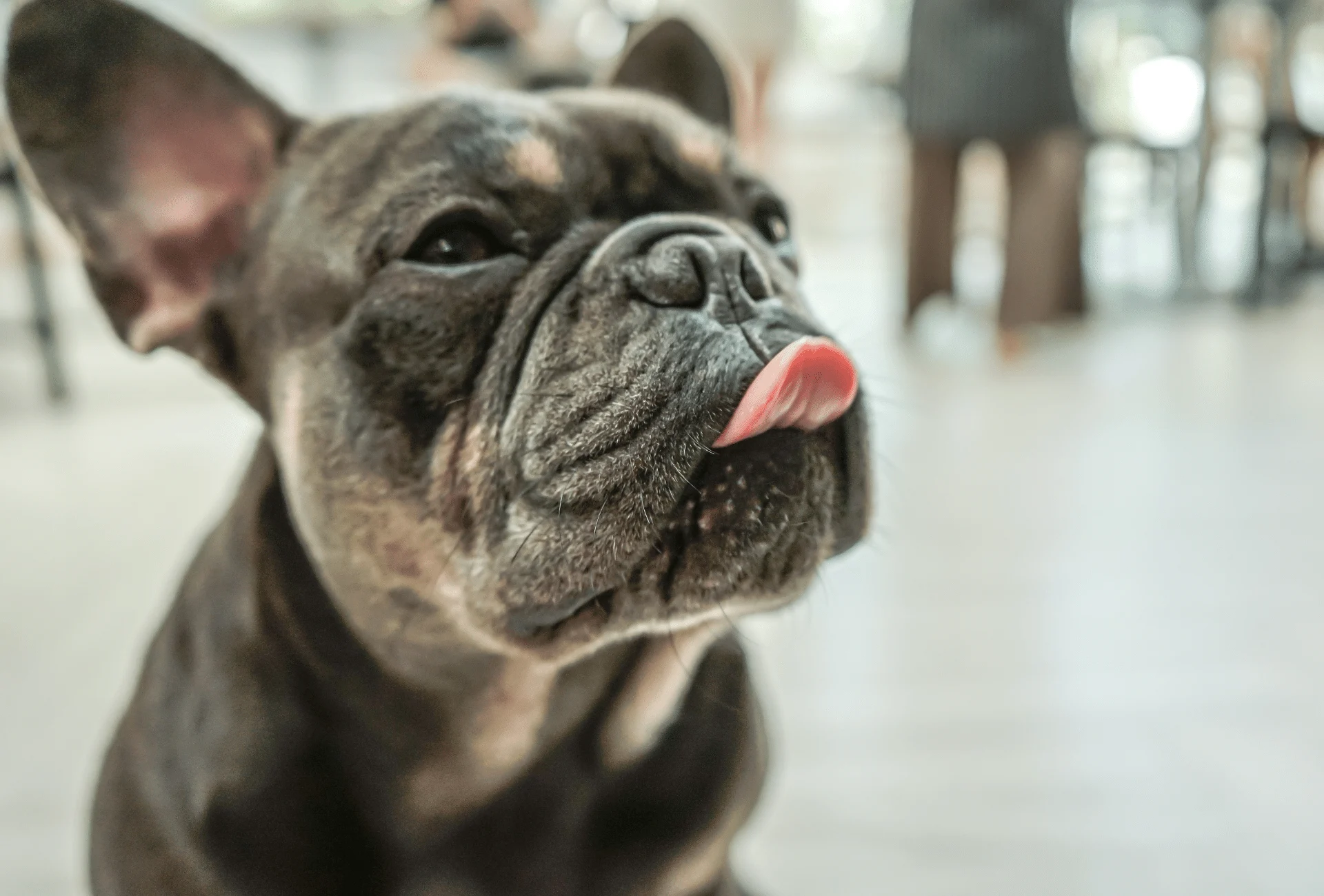
With a grey-blue or reddish-pink nose, this is an attractive yet costly breed for many.
Many breeders utilize both a C-section and artificial insemination to produce this color.
You might pay around $1k-3k for a lilac-colored Frenchie.
Some devoted buyers have been known to pay a much higher cost for a valuable bloodline.
Is it really worth it though?
The recent craze for these designer breeds has driven costs up and yet these dogs are not even allowed to participate in conformation in most clubs.
Consider paying for a healthy dog, not a particular color.
Blue French Bulldog
Another very rare gene code for this blue coloring, similar to the Lilac coloring above.
You might call this coat a diluted bluish-grey, caused by a dilute gene.
The coat coloring can range from blue-grey to almost black.
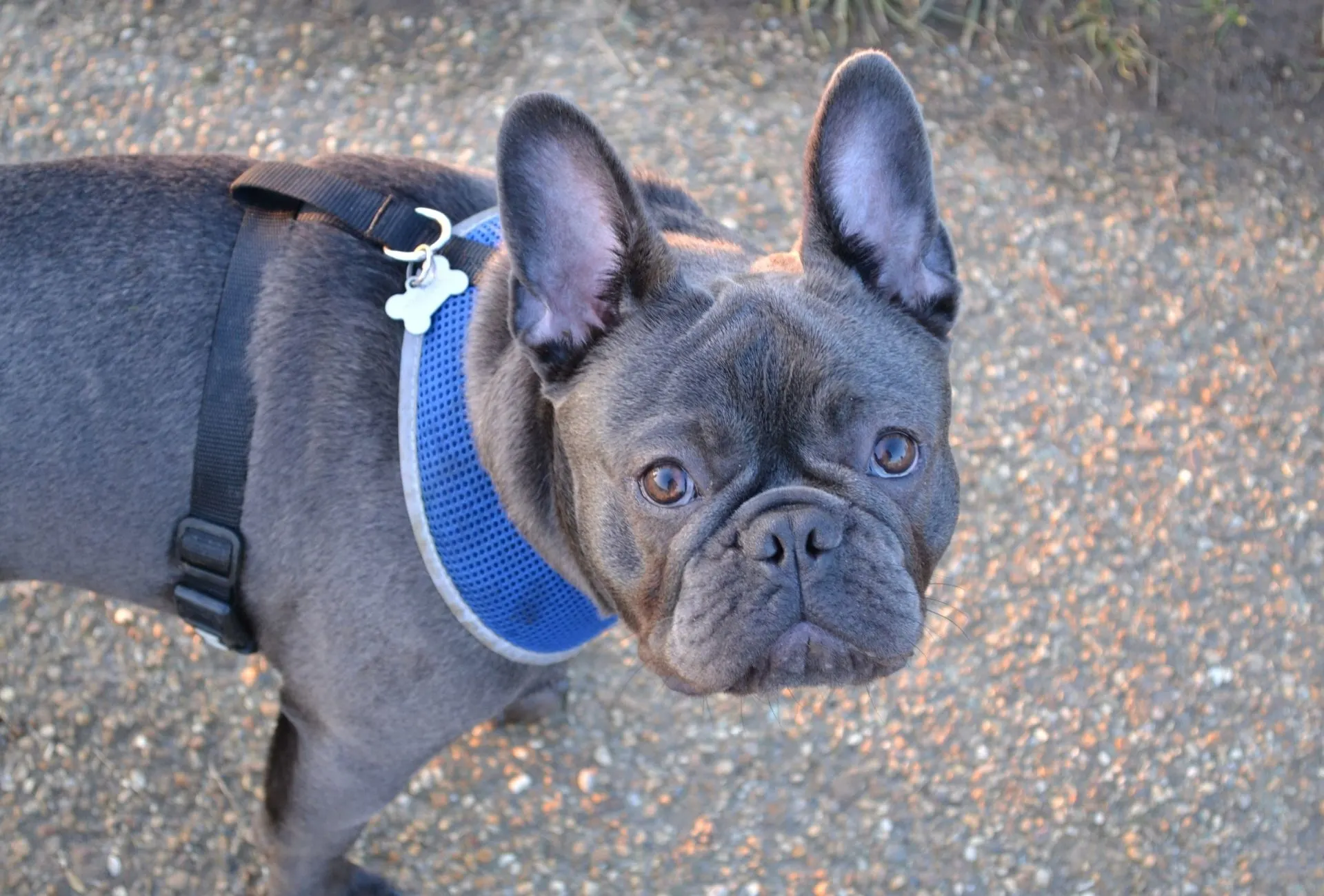
You might hear about several popular poor health-related issues.
Health complications in the blue French Bulldog will usually arise as a result of poor breeding practices.
And poor breeding practices are only created because there’s a demand by buyers.
While the chances of genetic and hereditary medical problems will decrease significantly with a reputable breeder, they won’t ever disappear entirely.
Like the color pattern above, these dogs can come with a significant price tag, which is often not even justified since many breeders crank out puppies with “desirable” colors just to earn more.
Blue and Tan/Fawn French Bulldog
These are generally fawn French Bulldogs with traces of dilution around their ears, paw pads, noses, and masks.
Like most blue-colored Frenchies, these guys can range in price from around $4,000 to $10,000 which is absolutely ridiculous considering their lineage and lack of health testing in many cases.
There’s a slight difference between the black and tan Frenchies.
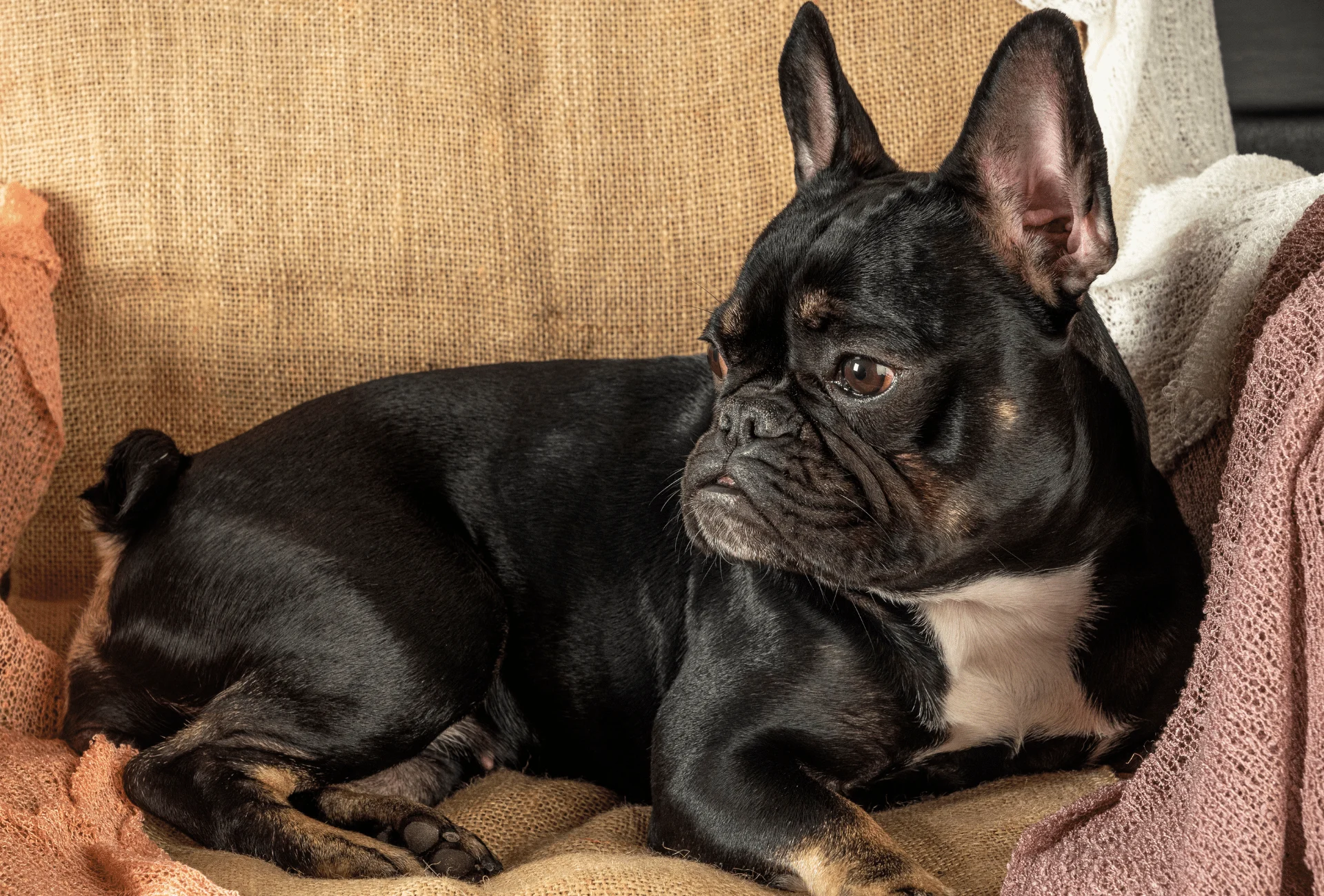
The lighter eye color, along with variances in mask color, can set this color scheme apart from normal fawn coloring.
Blue Pied French Bulldog
A predominantly white coat sporting clearly marked patches of blue adorn parts of the body and head, or both.
Coat & color patterns can get pretty diverse, varying greatly between dogs.
Puppies will usually have lighter coloring blanketing their cheeks, legs, and chest.
The average prices for these dogs can range from around $4,000 to $5,000.
Again, color shouldn’t be your main concern and if you’re planning on doing conformation or whatnot, you might struggle with the exotic colors.
Blue Sable French Bulldog
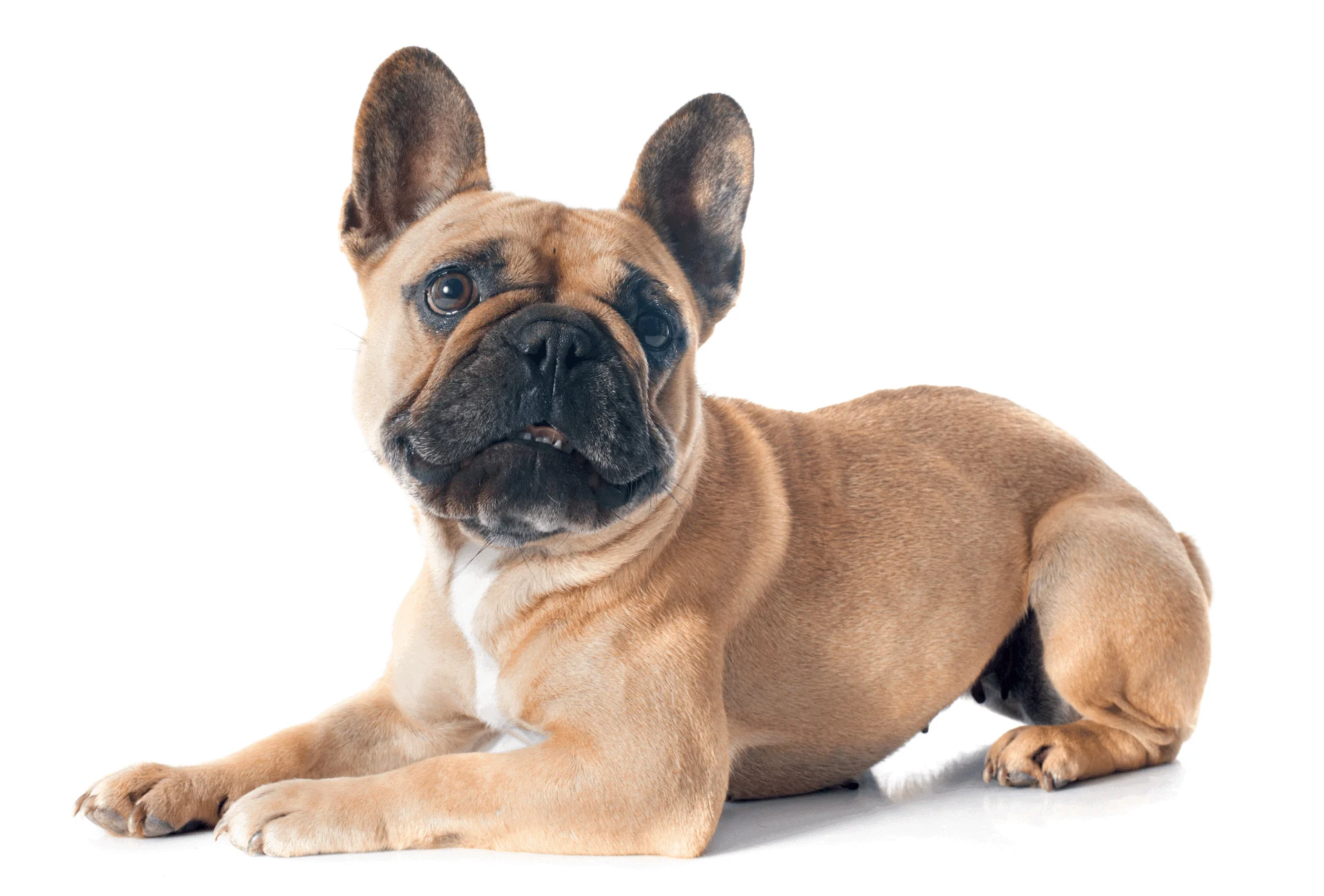
Blue Sables sport fawn coloration on the lower legs and head with a blue mask and blue-tipped hairs.
Like the others here with a blue combination, these Frenchies are also quite rare and costly because unjustified demand makes it attractive for breeders to create all kinds of color variations.
Brindle French Bulldog
Random stripes and/or spots dot the otherwise normal colored coats on these little ones.
These spotted markings are usually only slightly different in the normal coat color, but in some cases there can be a difference similar to a white coat with black stripes.
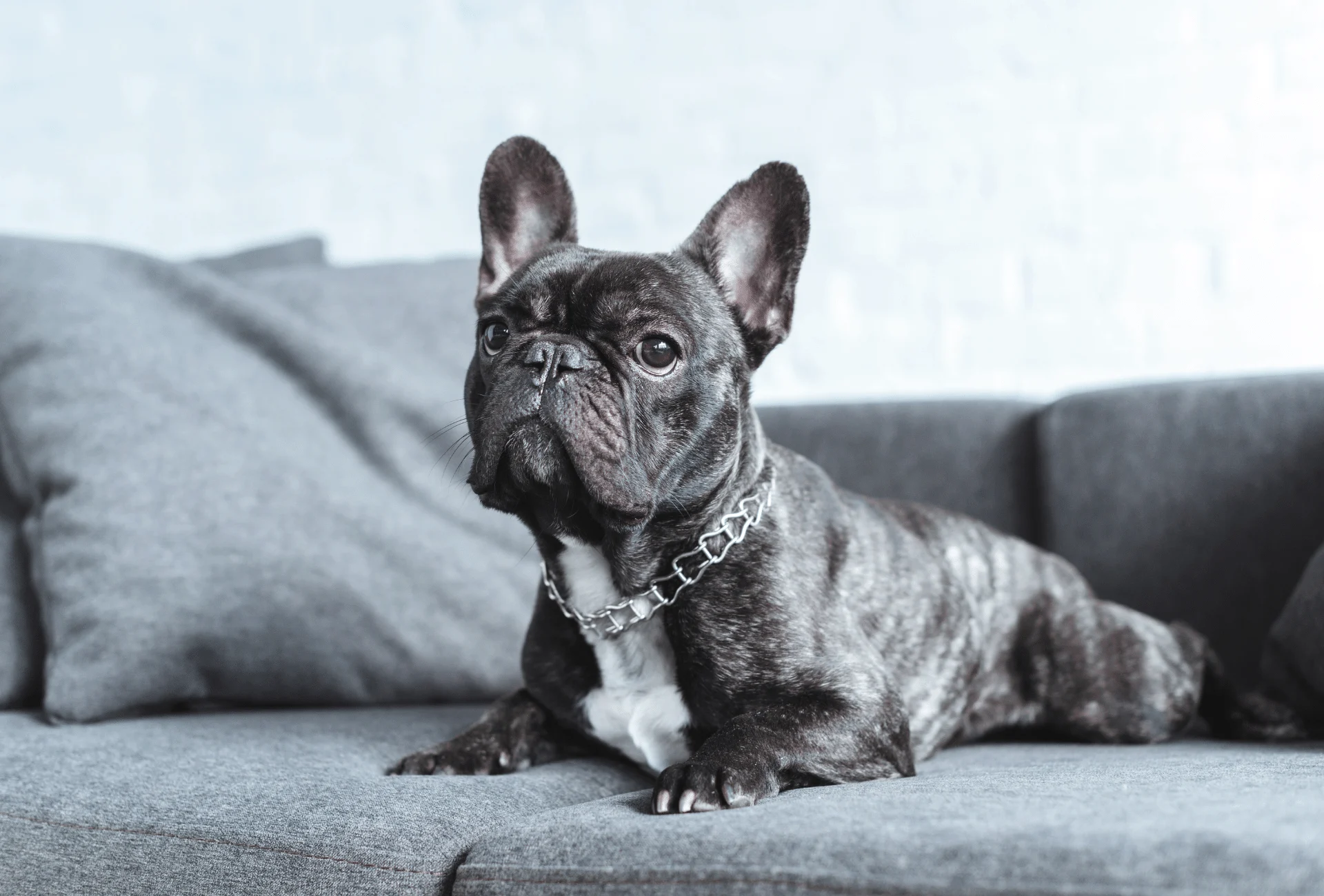
“Brindle ranges from sparse but clearly defined black stripes on a fawn background to such heavy concentration of black striping that the essential fawn background color barely shows through (“black brindle”).”
Brindle Piebald
Piebald Frenchies show a relatively white coat coloring and sport large darker colored patches on various portions of their bodies.
This usually includes the neck, around the eyes and ears, and back.
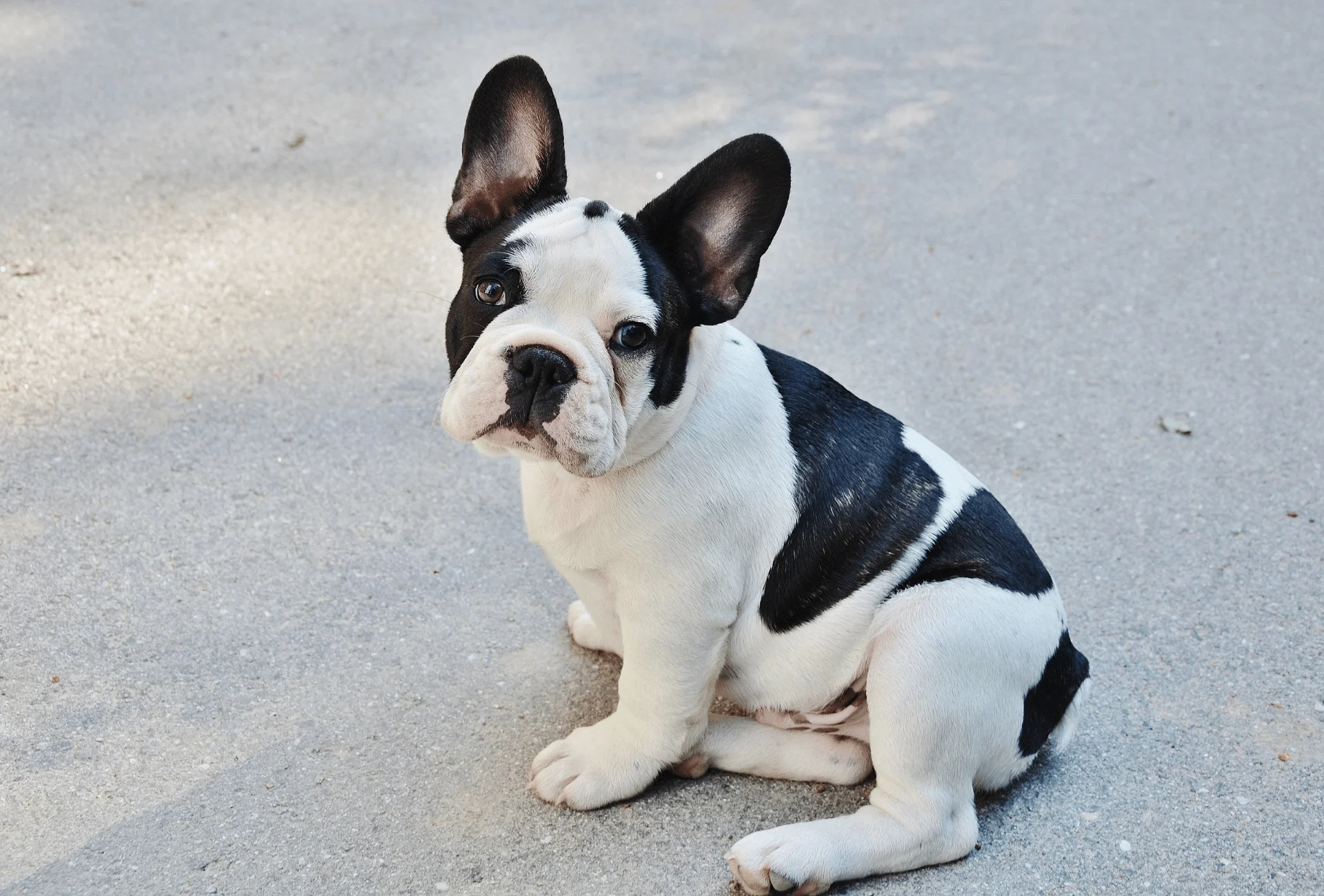
In the case of Brindle Piebalds, a trace of brindle pattering is enough.
“Only a trace of the background color is necessary; in a brindle piebald, a trace of the brindle patterning in any patch is sufficient.”
Chocolate French Bulldog
You’ve probably guessed, these guys usually take on a ‘milk chocolate’ color, terms that are often hated by advocates for this breed (or any breed).
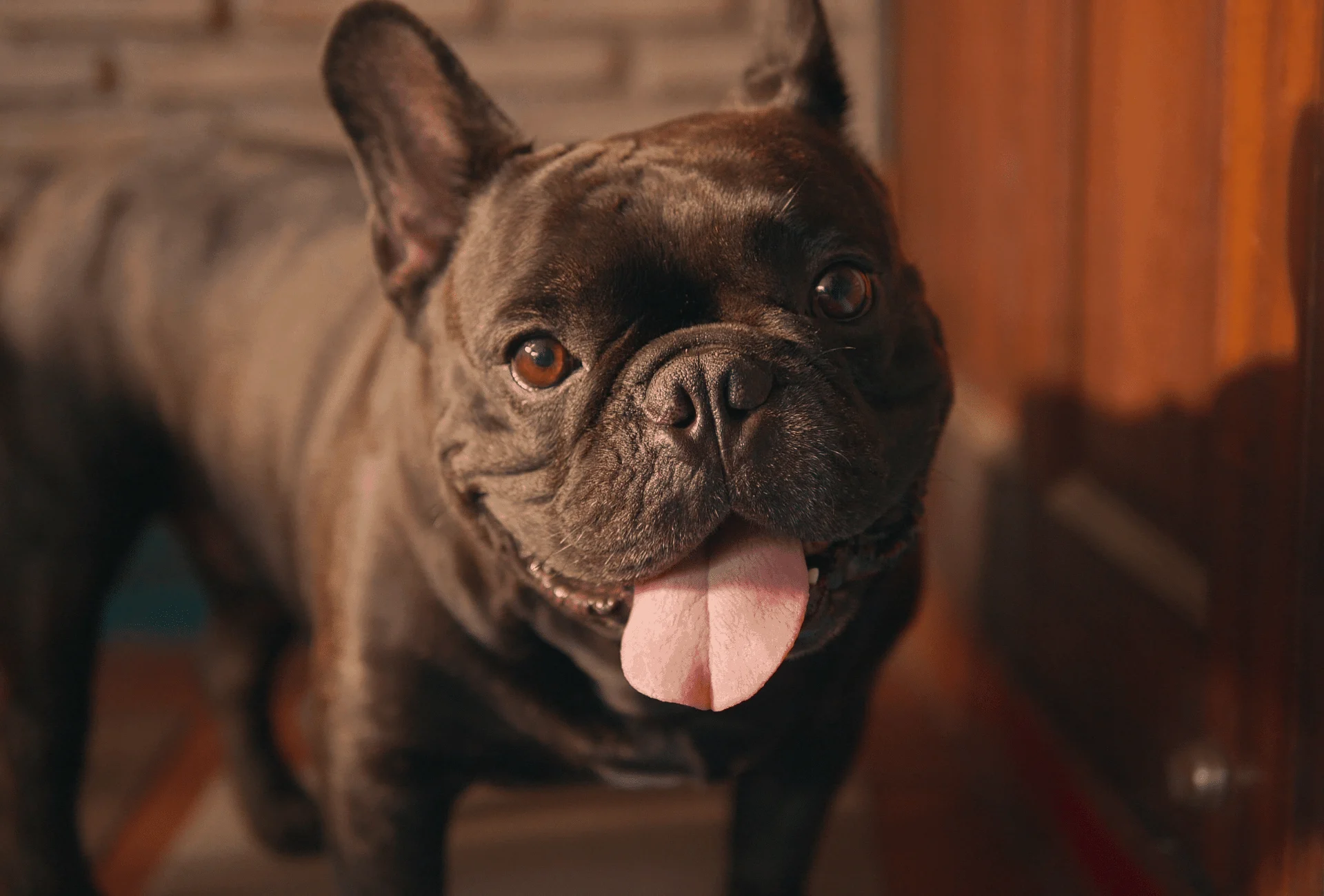
We can thank the chocolate/brown allele for these chocolate coats.
Since the gene is recessive, two genes need to be present for this French Bulldog coloring.
Isabella French Bulldog
Considered by many to be the absolute rarest of French Bulldog colors, boasting a greyish-blue, liver-colored coat.
A dilution in the recessive color genes provides this breathtaking Isabella-blue coloration.
Noses can range from a lighter brown to pink, while the eyes can range from light brown to blue.
An average price tag of $20,000 also places this unique Frenchie as the most costly.
Price tags in this range are almost never justified (exceptions being special breeding programs for guide dogs, protection work, etc. which probably won’t consider any crazy colors in purebreds), especially for colors that do not adhere to the standards.
Red Fawn French Bulldog
As the name implies, these fellows sport sort of reddish-tan French Bulldog colors.
They can present with a white patch on his chest, and a darker mask.
“Disqualifying colors and patterns include, but are not limited to, solid black, black and tan, black and white, white with black, blue, blue fawn, liver, and merle. Black means black without a trace of brindle.”
Sable French Bulldog
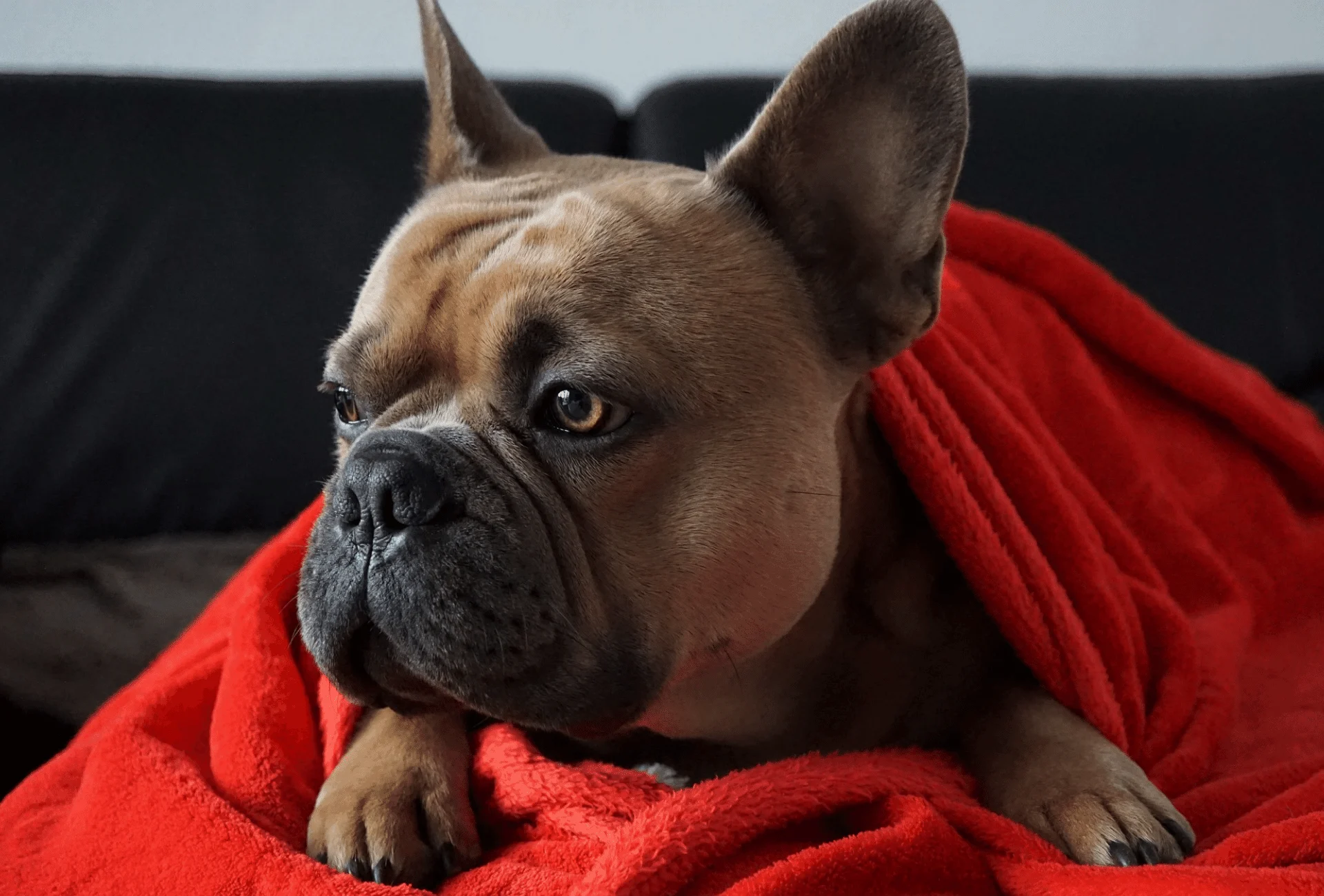
These fellows wear a unique version of the fawn French Bulldog color.
The fawn hairs have black tipping this time.
French Bulldog History
Originating in England, French Bulldogs were bred to be miniature versions of their larger Bulldog cousins.
It wasn’t until slightly after their conception in England that French breeders began tuning the dogs to their liking.
In fact, the Frenchies we know today were first bred in 1800s Nottingham by lace makers of that period.
When these craftsmen began moving to France in the 1860s they brought their toy bulldogs with them.
It wasn’t until then that the little dogs exploded in popularity, appropriately labeled ‘French Bulldogs’.
Some experts say the name comes from Pug/Terrier crossbreeding.
French Bulldog Common Health Problems
Due to heredity and breeding history, French Bulldogs can be prone to developing certain health conditions other dog breeds don’t see as much.
Though disorders might differ, they share that similarity with most breeds today: very few are completely free from genetic conditions.
On the other hand, you can increase the chances your Frenchie will live a long and happy life by wisely selecting a reputable breeder.
Make sure you ask questions about the health of the parents and ensure they are all well cared for.
Thanks to today’s advances in veterinary science, you can even have your Frenchie’s genome mapped.
Ear Infections
Their narrow ear canals increase the French Bulldog’s vulnerability to ear infections.
Swollen glands can produce an abnormal amount of wax, sometimes leading to increased inflammation.
Be on the lookout for any abnormal scratching, and check your Frenchie’s ears regularly.
Diarrhea
Stomach upset and GI issues are pretty common in the bread.
Frenchies tend to be overly sensitive to bacteria like e-coli, parasites, or viruses, often leading to diarrhea as the body attempts to rid itself of these irritants.
Normally, this wouldn’t be a huge concern.
Dogs get sick and usually respond well, but extended diarrhea can lead to dehydration.
Runny, tarry or bloody, wet or unusually foul-smelling droppings are signs there is a bigger problem at play that might need attention.
Conjunctivitis
Their particular genetics make French Bulldogs more prone to developing conjunctivitis (pink eye) than other breeds.
Conjunctivitis is the medical term for inflammation of the conjunctiva, or the membrane that covers the whites of the eyes.
Conjunctivitis is caused by an infection, normally in response to bacteria.
If your dog has developed this, it’s best to keep him away from other dogs for the time being.
Skin Problems
Both environmental and food allergies commonly plague French Bulldogs.
Things like autoimmune skin diseases or parasites can also pose a problem.
Bacteria can sometimes collect around those skin folds, causing issues.
Unlike humans, allergies will more often manifest in the form of skin rashes on dogs, causing them to want to bite and itch.
Secondary infections from open wounds might be more of a problem than the allergy itself, which can almost always be managed through watchful care.
Breathing Problems
French Bulldogs fall in the ‘Brachycephalic’ category, meaning they have a short muzzle.
Panting and regular breathing can be problematic, leading to shortness of breath or an increased chance of heat-related injuries.
Because they can have difficulty breathing, along with the obvious posture-related issues, French Bulldogs should never be left unsupervised around any body of water.
Vacationers should also think twice about any air travel.
Discussing any possible breathing issues, and what to do if you notice any problems, with your veterinarian is recommended.
Smoking around these dogs is frowned upon, risking their already fragile upper respiratory system.
Merle French Bulldog Color Gene
Breeding two French Bulldogs with the Merle gene can lead to severe health complications.
Out of all possible colors, only a select few (top) are accepted by the American Kennel Club (and most others).
The AKC recognizes a purebred, healthy lineage, and won’t accept many of the popular and rare ‘fad colors’.

Terry Mingay
Monday 15th of February 2021
FYI In 1897 when the 1st French Bulldogs we registered Brindle was the only accepted color. In 1911 Fawn Cream and Pied were added to the list. It is about time the colors be reviewed again as there are numerous colors available. Ethical breeders do their research and choose combinations to maximise health and supply demand. These exotic colors are in high demand because they look better than the standard colors in my opinion. If I prefer a blue and am prepared to pay for it, I should be able to buy one from a reputable breeder. Slating these breeders comes across as sour grapes. You won't find an exotic owner berating a standard owner for choosing the mundane colors. I have had enough of unsubstantiated claims that all exotic colours have health issues, when in fact French Bulldogs as a breed have health issues. Go get yourself a wolf if you don't want a dog thats specifically bred for preferred traits.
Danielle
Tuesday 16th of February 2021
Hey Terry,
thanks for your input. Looks and color preferences are entirely subjective, I'm not trying to say one color is superior in looks. When you say an exotic owner is not berating a standard owner, the same applies vice versa because a standard owner is not criticizing the color choice, but rather the health issues that come along with it.
Of course, there may be breeders who try to breed the more exotic colors in a responsible way, but even all the health issues aside - the surge in demand ultimately increases the suppliers on the market and which color will the people breed who are just in it for the short-term dollars? The colors with the highest ROI.
You're right in saying that the French Bulldog, in general, has issues but prioritizing color over health won't help. It may be hard to single out coat color in research articles like this, but the data collected so far suggests that unhealthy breeding is more common among the exotic colors.
Again, thanks for your thoughts!
Tammy Sutton
Wednesday 11th of November 2020
Really disconcerting to read about these ‘designer’ colors as if they are of any value in the dog world. You also missed the breeding ethic, which is “ONLY BREED TO IMPROVE THE STANDARD”. There can be no lineage in any of them as they're not permitted to show. Calling them ‘rare’ perpetuates the myth that they are something other than genetic misfits. You wouldn’t pay a premium for a runt, why would you pay one for a mutant. You didn’t get that across at all and that’s the problem. This bastardizing of the breed has got to stop!! It’s attracting every liar, cheater, thief and puppy mill. This is why you end up with the “Jordan 16”.
Danielle
Thursday 12th of November 2020
Hey Tammy,
I completely understand what you mean. I've actually mentioned this in the upper middle part, but also added a disclaimer to the beginning now, which I usually do anyway.
The thing is that many people are seeking out these colors from breeders which is completely wrong. BUT, there are also rescue dogs and some people are just interested in the possible color combinations. I don't support mixed breeds from breeders either, but that doesn't mean that people should act as if there are no mixed breeds in shelters. I do not advocate for cropped/docked dogs and yet many people prefer their dogs that way (especially in the US, mostly illegal in European countries).
These color combinations are rare. Are they good? I didn't say that. Rare = Desirable is a connection that might be construed by the reader but that's absolutely not my goal. Rare means they're not seen as often, whether or not that's a good thing is debatable.
My goal with these posts is to educate people and maybe even steer them away from getting these colors from breeders, I've tried to clarify that now. Check out my Cane Corso colors post where something similar is happening - breeders labeling their dogs as "blue" instead of "gray" which might not be a big deal at first, but shows that the breeder never even looked up the proper breeding standard.
Thanks for your input, Danielle